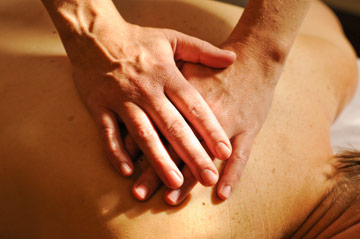Self-Care Tips

Over the years, I have gleaned many tips for taking care of yourself from teachers and colleagues.
Tension Release Tools
Ben BenjaminPinky balls are one of the cheapest, most effective tension release tools. A rubber ball or tennis ball placed anywhere on any muscles on the body and then leaned into can release a lot of tension. Be careful not to lean into bone or any place that hurts. Don't stay in any one spot for longer than a minute. Put two pinkies together into a sock and then make a knot to keep them together. Positioning yourself with one ball on either side of your spine, this makes a great tool for rolling up and down the muscles on either side of your spine. Lean against a wall for less pressure or lie down on a bed or the floor for more pressure.
How to Tie Your Shoes
Judith AstonStand and bend over while tying your shoes. Most people tie their shoes in a sitting position, which is not weight bearing. If your shoes are meant to support your weight, then your weight should be in them when they're tied to fit your feet. Another method is bending down on one knee while you tie the other shoe.
Warming Up
Warming up is the missing component of most peoples' exercise routines. Warming up before your main exercises or stretches helps to prepare your body for these other activities, improving your performance and decreasing your chance for injury. Warming up involves gentle movements that do not put too much stress on your heart or take your muscles to the end of their range of motion.
Stretching
Stretching, or taking your muscles gently to the end of their comfortable range of motion, is an important part of tension reduction. It decreases your risk of injury and maintains the elasticity of the muscles, which in turn reduces tension. Stretching should be slow and gentle and should not hurt. It's best to have someone knowledgeable show you how to stretch.
Change Your Visual Focus
From Rosemary GordonChange your visual focus once every five minutes to a distance of at least 20 feet away. If you have a window, this is pretty easy to do. If you're in a small space without a window, you can use mirrors to increase the perceived distance. When you look into a mirror, the distance from you to the mirror plus the distance from the mirror to the object you focus on in the mirror is added together for the total "distance” you are seeing.
Take Breaks
The worst thing for your body is to do the same activity for too long a period without a change. Whatever you are doing, do something different with your body as often as possible even if just for a few seconds.